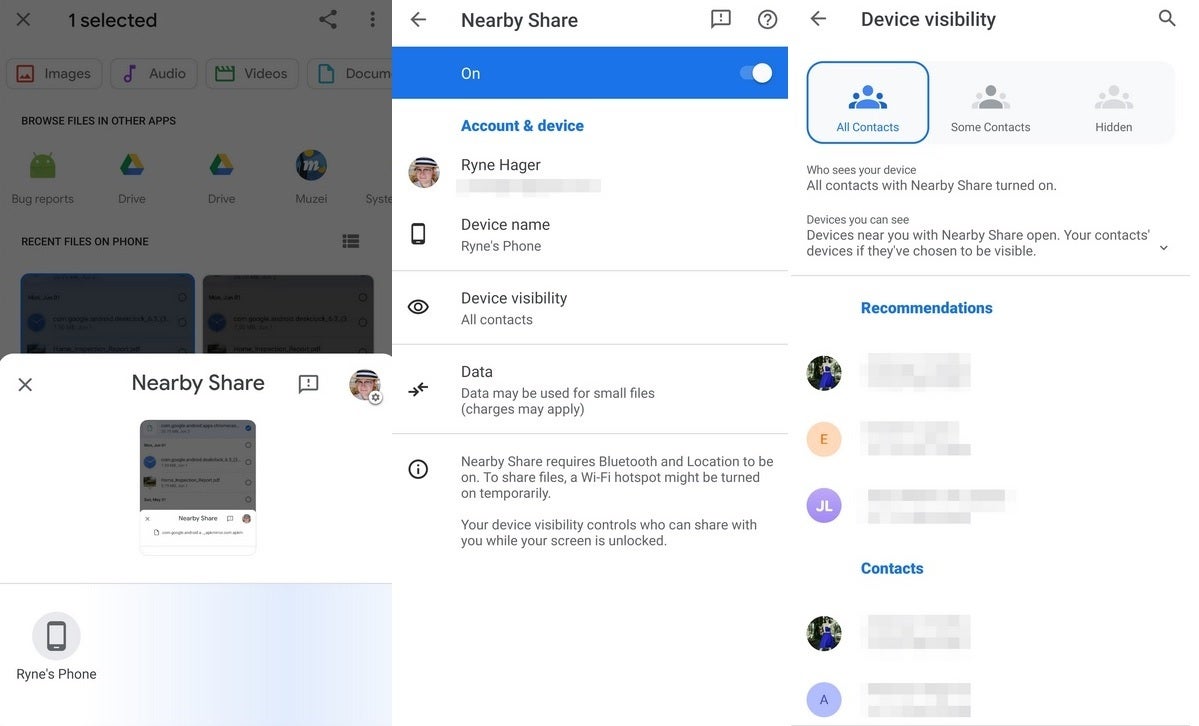Google is beta testing its version of an iOS feature for Android

Ever since the launch of iOS 7 in September 2013, Apple iPhone users have been able to share documents, pictures, and other files with another iPhone nearby without using email or an internet connection. The feature sends encrypted data through a peer-to-peer Wi-Fi connection without using a Wi-Fi access point or an internet connection. Users can set AirDrop to receive files from anyone, contacts only, or have AirDrop turned off.
Google is beta testing its version of AirDrop called Nearby Share
Google has been working on a similar feature for Android called Nearby Share; the company confirmed with Android Police that a beta version of Nearby Share is being disseminated through the Play Services beta. Android Police was able to get it running on a Pixel 4 XL and a Pixel 3a both running Android 10 and shared (albeit not nearby) how the feature works. Google says, "We’re currently conducting a beta test of a new Nearby Share feature that we plan to share more information on in the future. Our goal is to launch the feature with support for Android 6+ devices as well as other platforms." You need to opt-in to the Play Services beta to receive the beta test and must also be the lucky recipient of a server-side update. So yeah, we'd say that the odds to be a beta tester for this feature are not in your favor.

Google is testing Nearby Share
Nearby Share will first appear as an 'app option' on the Share Sheet although a small prompt could also surface in the content preview. Besides videos and photos, Nearby Share will also send URLs, tweets, and other things as well. The first time you select it from the Share Sheet, you'll be prompted to turn it on.
Once you have enabled Nearby Share, your phone will start to look for others with the feature turned on. Exiting the system is as easy as tapping the "X" on the upper left corner of the screen; tapping the avatar on the right will bring up a settings page where info such as the device name, and visibility option selected can be changed. You'll be able to limit your visibility to all contacts with Nearby Share enabled, some contacts, or stay hidden. In addition, the method used to send the files can be modified so that the internet is used for small files, Wi-Fi employed on other files, or to always share offline.
The shared content will end up in the appropriate location. A received tweet will end up in your Twitter app, files in the download directory, URLs in the browser, and photos wherever you keep images. And Nearby Share can also be added to Quick Settings. If you know that someone from outside your contacts list is trying to share something with you, Nearby Share can be enabled from Quick Settings so you aren't necessarily limited to sharing with people on your contacts list. You just have to know that it is coming.
Some AirDrop users who get off on sending inappropriate photos of themselves or others have been accused of "cyber-flashing." These AirDrop users in close proximity to others, say on a subway, a theater, or in a doctor's waiting room, send X-rated images through an AirDrop connection. Since only those with their visibility set to Everyone would get these gross images sent by strangers, this might be a good time to remind iPhone users to set their visibility to Contacts Only.
On the other hand, Nearby Share doesn't have a way for a bad actor to send such material to Android users who are strangers unless they are expecting to receive a shared file from a stranger. The best way to avoid receiving X-rated images via Nearby Share is to keep it disabled on Quick Settings.










Things that are NOT allowed: